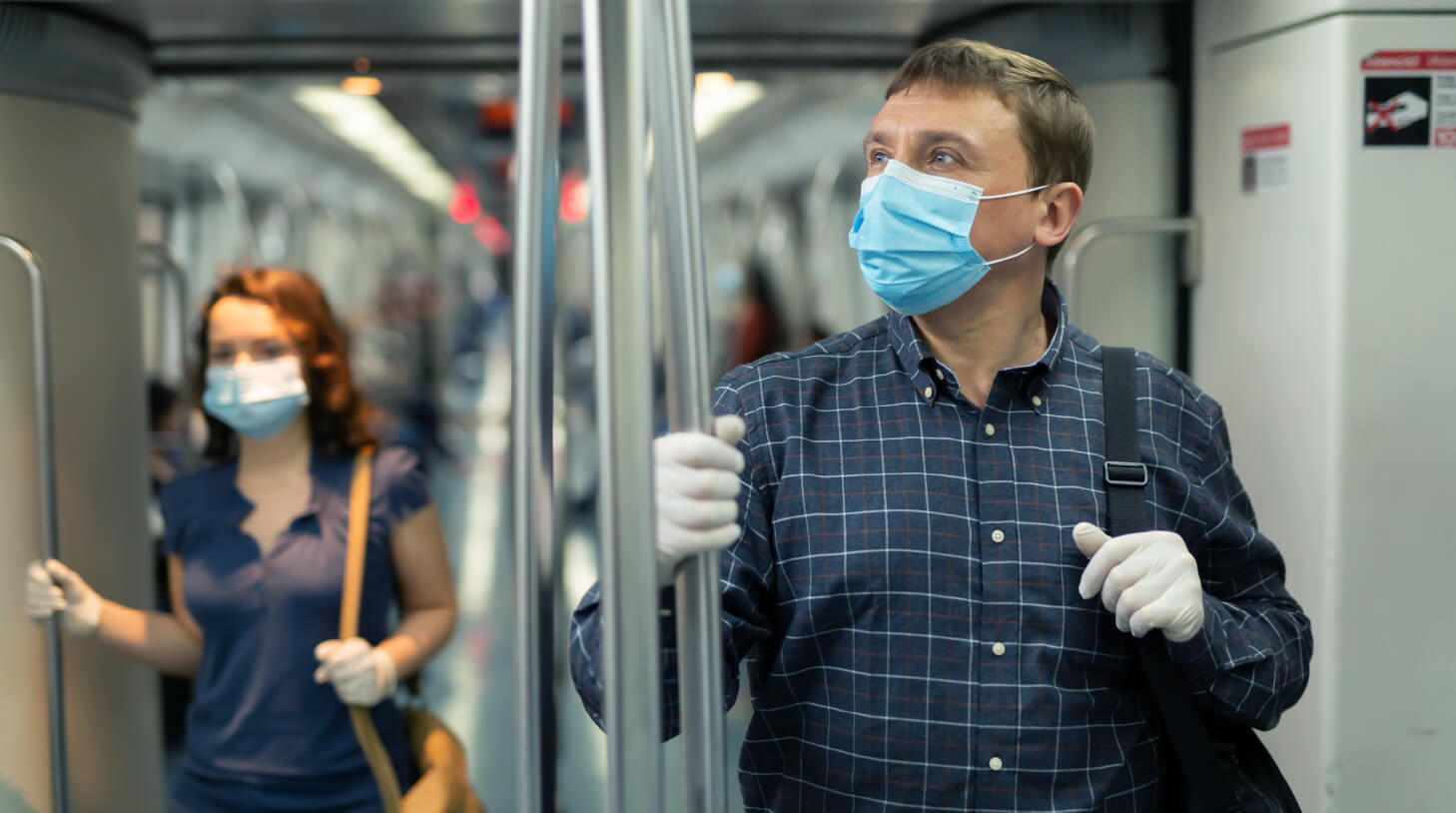Return to a new world of work: Get ready with these 5 insights
Return to work. The “new normal”. The “next normal”. All these and more are being discussed en masse as different economies and governments – and business leaders, thought leaders, HR reps, investors, recruiters, among others – try to look into the future and figure out what this brave new post-COVID world will be like.

If you’re wondering the same, you’re not alone. We’re wondering the same too. This is an unprecedented situation, and consequently, there are no tried-and-true playbooks. This means learning as we go, and learning from others, too, in this new world of work.
But there is content being written about this return to some sense of “business as usual”. We’re pulling all of this together into five major insights, plus a bonus list at the end of companies who have shared playbooks and blueprints for their own action plan.
Table of Contents
- Physical office revolution
- Introduction of new equipment and supplies
- Change in office etiquette
- Change in work hours and commutes
- An increase in remote work
- Additional resources – what other companies are doing
1. Physical office revolution
If the discussions are any indication, office space in the new world of work will be remarkably different. There will likely be a departure from the open-office environments that surged in popularity in recent decades.
But the return to the cubicle environment isn’t necessarily accurate, despite what Wired may make it sound like. The reality is, this is more of an evolution of office structure than a regression to the horrific fabric-laden wall separations so commonly derided in pop culture – particularly in the movie Office Space.
No, your employees needn’t be left behind in the dark. There are many brains behind the design of the “new” workplace, with COVID-19 being a catalyst for the evolution of a more functional office space, as is intricately detailed in this piece from Business Insider, complete with sketches and diagrams of how your new office might look.
“The fundamentals of real-estate economics — we don’t suddenly have the cash to buy three times more space,” Melissa Hanley, the CEO of the design firm Blitz, told BI. “So if we’re going to engage in social distancing, we have to think about it in a different way.”
Many design solutions are being proposed, including the “Six Feet Office” concept from commercial real estate services firm Cushman & Wakefield, showing how routing and physical distancing rules can be implemented to ensure compliance with the six-feet separation recommendation:
The good news is that you probably don’t have to plan for the new world of work on your own. There are numerous workplace management platforms out there that can do the grunt work for you based on algorithms and data, including:
Maptician Flex – This tool analyzes an office’s physical layout including hallways, meeting rooms, etc. to devise the best desk arrangement. It also includes options for staggering employee schedules and has a built-in contact-tracing system to help identify those most at risk when a colleague falls ill.
Wisp by Gensler – This tool analyzes the existing layout of a workplace to identify an optimal plan for assigning seating, and includes personalized human expertise as needed.
Salesforce’s Work.com – This tool includes a contact-tracing system, shift-management algorithm, and a dashboard of localized COVID-19 data and government guidance. This product is created with open-architecture coding, allowing developers to design/build as needed and share via a marketplace for other users to utilize.
2. Introduction of new equipment and supplies
Office layout is just the first step in what’s being discussed in return-to-work best practices. Employers and thought leaders are also talking about the introduction of new technologies, supplies, and capabilities throughout offices to ensure minimal transmission of viruses and bacteria.
For example, low- or no-touch fixtures may be introduced throughout (buttons, door handles, faucets, etc.). Temperature checks and hand-washing stations will be available on arrival for employees and office visitors. Some offices will implement required wearing of masks and other face coverings. Those with the munchies may suffer – snacks and other all-in food options will potentially be limited or phased out altogether, and canteens may be closed or tightly managed.
Plexiglass sneeze guards and movable or permanent barriers are being considered by employers, as well as movable partitions in what is being described as the potential end of the open office as we know it. Employers are talking about hand sanitizers at every desk. There may be an increase in the use of copper as a design element in office spaces, as it’s less hospitable to germs. And there’ll be increased, intensive sanitizing and cleaning during off-work hours.
A breath of fresh air
Good news for those who are weary of the dead-air offices, numbing drone of air returns, and flickering fluorescent lights – we may be looking at brighter, breezier offices ahead. HEPA filters will be more often used and there’ll be more ventilation in offices with open windows and more free air-flow. Ideally, we’ll bid a final farewell to the sick-building syndrome for good. Offices will be designed to take in more sunlight and there’ll be more outdoor office space where it can be accommodated.
3. Change in office etiquette
Physical layouts and added equipment can only do so much. There are human habits that also need to be managed and controlled. Common cultural greetings such as the touching of noses in the UAE and Qatar, the cheek-to-cheek kiss commonly seen in many countries worldwide, the friendly hug between familiar companions, and, of course, the ubiquitous handshake are all being strongly discouraged.
But we’re social animals – we need to greet each other somehow. Don’t despair – the “Wuhan shake” (touching feet instead of shaking hands) has been played up in social media as a safe alternative. There’s also the clasping of one’s own hands as a greeting – as seen in Beijing – rather than shaking hands. There are many other touch-free options to greet one another, including the head nod, the wave, the obvious “hello”, and if you’re an Office fan, the Jim and Pam air-five:

Face-to-face meetings can also be reduced where possible. There are many instances in which these meetings can’t be avoided, and are even preferred to video or other telecommunications, particularly to get through some of the difficult stuff like conflict resolution, complex project strategizing, and so on.
In cases where face-to-face meetings are inevitable, there are etiquettes that can be expected to be followed. The obvious precautions – no touching, no handshakes, etc. – apply, but there are other rules that will be implemented to mitigate transmission in the new world of work. For instance:
- Reducing or eliminating the sharing of paperwork
- Using hand sanitizer both on entry and exit from the meeting room
- Banning of food sharing – and especially no need for catered lunches
- Ensuring physical separation in the meeting room – sit at least one full chair away from each other
4. Change in work hours and commutes
If the 9-to-5 was already on its way out, the pandemic may actually be the final nail in the coffin for those industries that don’t absolutely need to adhere to such a schedule and only stick to it out of habit. The greater emphasis on flexible work hours and work-life integration may be already in vogue for many, but there’s another thing that will likely become norm as business returns to some kind of “normal”: hot desking and staggered work days to reduce the density of workers in the office at any given time.
Spreading out the work hours also means lesser concentration on the commute during rush hour, which will benefit many who do need to go to the office. We won’t see nearly as much packing onto trains and buses – or even highways – as workers travel to and from work every day, with the benefit being twofold: a reduction in the average commute time which reached a new record high of 27 minutes each way in the United States in 2018.
An IBM study finds that 20% of respondents who regularly used buses, subways or trains now said they no longer would after the crisis passes, and 28% would use it less. More than half surveyed would reduce or even eliminate ridesharing (Uber, Lyft, etc.) as an option. A staggering 75% said they were less likely to attend an in-person conference or trade show in 2020.
[bctt tweet=”Are you ready – really ready – for the new world of work? These 5 insights will help your business prepare and land on your feet – and reassure your employees that you’ve got their back.” username=”workable”]
With the health consequences of a heavy commute being tangible, including obesity, breakdowns in family dynamics and relationships, burnout, disengagement and increased sick days – and augmented by congestion being a perfect recipe for COVID-19 to spread, the benefits of a reduced commute would be hugely welcome for both employee and employer.
5. An increase in remote work
Remote work is the obvious go-to solution – and the most widely discussed one – to reducing the risk of COVID-19 contamination in the new world of work. GlobalWorkplaceAnalytics found numerous socio-economic benefits to offering remote work as an option or even shifting an entire company to a remote-first operation.
Even though the remote work trend has been gradually introduced across industries and economies for years – even decades or centuries – it’s still a new thing for many companies. But the COVID-19 crisis has been a catalyst to push that even further – with the pandemic being described as the “remote work tipping point” by TopTal in a detailed infographic of the history of remote work dating back to 1560.
The IBM study mentioned above notes that it’s not just a “nice to have” among employees – it’s a growing “must have” or an “expected to have”. A full 40% now expect their employer to offer remote work options when returning to normal operations,and 75% would like to do it occasionally.
Plus, 54% would like their job to be remote-first. The perks are clear – no commute, more time with family, greater control over schedule, decreased stress, and so on. Paramount is the emphasis on work-life integration – the ability to determine one’s own schedule to excel in both work and personal life.
It’s not just about reducing the transmission of COVID-19 – it’s about increased tangible benefit to the employer as well. Remote workers put in an additional two full weeks of work than their in-office counterparts, the costs saved in providing traditional office space is lower, and employee retention is higher. Suffice it to say, remote work is here to stay.
The work, it is a-changin’
Whether you’re an employee or employer, a hiring manager or recruiter or HR manager, your work world will be impacted massively. There’s no point in crawling under a rock and hoping everything goes back to normal once the COVID-19 crisis passes – because it most likely won’t return to the way things were. We’re entering a whole new world of work.
This isn’t necessarily a terrifying revelation – rather, consider it a concentration of the next five years of progress happening within the span of a few months. There’s a famous quote by Russian revolutionary Vladimir Lenin: “There are decades where nothing happens; and there are weeks where decades happen.”
Right now are the weeks where decades are happening, so to speak. What you can do as an employer or HR manager is to try and prepare as much as you can – because one thing that isn’t changing is that we’re going to continue business in some form or another. In the end, what matters is the health and safety of your employees – be it mental, physical, financial or otherwise – and taking many or all of the above learnings into account will go a long way for them and for you, as well.
Additional resources
Theories and predictions are fantastic, but you want to see what companies are actually doing and planning in terms of return-to-work strategies. That’s great, because there’s plenty out there, and they’re sharing their plans with the public. Learn from them as we enter a new world of work:
Bergmayer
This self-declared design collaborative focused on improving everyday lives through design – shared a comprehensive return-to-work plan that included:
- details on compliance with local and federal government
- sanitization protocolsa staggered schedule – i.e. Mon/Wed/Fri for some employees, Tues/Thurs for others
- detailed visuals on how the office layout will look
They’re clear that some of these are temporary guidelines around re-entry to the office, but some of it will become a new standard.
KPMG
Irish financial services company KPMG shared a PDF of their return-to-office plan, with step-by-step details on:
- gradual and phased return for employees
- key mitigation measures (access controls, physical distancing, PPEs, office cleaning/hygiene)
- travel considerations and preemptive measures for conferences, events and meetings
- preparations for technology incorporation
KPMG also included guidelines on communications and compliance in what they ultimately called the “New Reality”.
Kroger
Supermarket chain Kroger, being an essential service, has this blueprint for their new world of work efforts, including details on:
- the process to follow if an employee tests positive for COVID-19 and measures to contain the spread of the virus throughout its own workforce
- utilization of data to make informed decisions
- best practices regarding employee and customer physical and mental well-being in their supermarkets and manufacturing plants (communications, sanitation, safety, traffic control, contactless solutions, PPEs, etc.)
- providing physical, mental, financial, and holistic support to managers, team members, and other colleagues throughout.
“We want to share what we’ve learned and best practices with other businesses, so they can take steps now to develop protocols and procedures to reopen safely and continue to flatten the curve,” Kroger CEO Rodney McMullen said in a video message.
Salesforce
Cloud-based CRM software mogul Salesforce shared six steps to be considered on returning to the office space, starting with:
- a guideline matrix on reopening (government guidance, medical advice, local leadership) specific to each office location
- preparation of new health and safety measures (testing, temperature screening, face covering requirements, physical distancing, deep cleaning, etc.)
- setting expectations and clear communications, office redesign, and supply chain strengthening
Forrester
Tech market research company Forrester shared two sets of pandemic management protocols for businesses to follow in returning to the office. The first set includes:
- guidelines on staggering your employee schedules
- tightly managing business travel
- maintaining social distancing
- boosting remote-work capabilities
The second set focuses more on the physical office itself:
- rigorous cleaning schedules
- rethinking office space to allow for greater distancing and less physical contact
- limitations on gatherings (meetings), temperature checks
- travel history monitoring for both colleagues and visitors.
Snap (Snapchat)
CEO Even Spiegel of Snap – the brains behind Snapchat – described his company’s return-to-work plan to CNBC’s Squawk Alley in a recent interview. He detailed changes to the floor plan, temperature checks, surveying for health conditions, micro-kitchens, and even the possibility of removing ice dispensers.
American Enterprise Institute
DC-based think tank American Enterprise Institute shared a detailed roadmap on returning to work, based on four phases of progress with many of the elements already discussed above – and with clear trigger points that need to happen to move to the next phase.
Alphabet (Google)
Internet behemoth Alphabet – best known as the parent company of Google – will reopen its offices starting June 1, and is looking to get 10%-15% capacity across its global offices. Those employees who require access to special equipment and those higher up the ladder will be prioritized for return, and those who can work from home will continue to do so until further notice.
“There will be no one-size-fits-all approach, and the specific guidance will vary from location to location,” according to a Google-issued memo.
Others
Similar practices were being looked at by numerous other companies including the tire company Pirelli, UK recruitment company PageGroup, and business services group Rentokil.
Social distancing, return-to-work schedules, PPEs, on-site testing, limitations on business travel, lesser density in office workforces, ramping up IT spending to accommodate remote work, and increased office ventilation and air quality were some of the hot topics being shared by some of the world’s top companies, including Boeing, IBM, and Discover Financial Services.
“Things will return to normal in our personal lives, like going to restaurants, but things in business will change forever,” cloud content and file-sharing service Box Inc. CEO Aaron Levie told MarketWatch.
Many other large US companies, including IBM, Hewlett Packard, JPMorgan, Citigroup and Goldman Sachs are enacting similar staggered return-to-work plans over the next few months. Like others, they’re also reevaluating crucial needs in the new world of work, which includes the hiring for new jobs such as “thermal scanner” and elevator attendants.
Note: Workable’s Marketing Content Intern Zinovia Panagopoulou’s research contributed significantly to this article.




